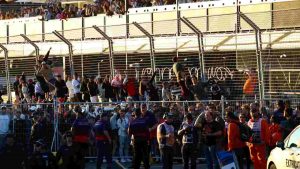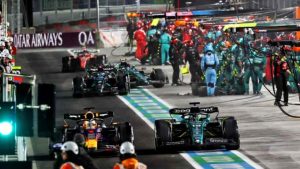Red Bull’s Adrian Newey Embraces Future of Formula 1 with Active Aero, Citing its Role in Advancing Road Car Technology

Legendary F1 Designer Supports Championship’s Plan for Increased Active Aerodynamics as a Pioneering Move for Road Car Innovation
In a recent exclusive interview with Motorsport.com, renowned Formula 1 designer Adrian Newey expressed his support for the championship’s plan to enhance active aerodynamics in F1 cars. The move, set to take effect in the 2026 rules reset, aligns with Newey’s belief that active aero technology is integral to both F1 performance and the future of road cars.
Active Aero’s Evolution in Formula 1:
Formula 1 has a history of incorporating active aerodynamic features, notably the introduction of the Drag Reduction System (DRS) in 2011. The upcoming 2026 regulations are expected to expand the use of active aero, introducing changes in wing incidence to achieve low drag during straights, similar to the existing DRS. This move is part of the broader effort to enhance aerodynamic efficiency and performance.
Adrian Newey’s Perspective:
Adrian Newey, Chief Technical Officer at Red Bull Racing, expressed his lack of concern regarding the increased use of active aero in F1. Addressing the idea, he stated, “The more active aero is really to try to make up for a power unit that’s lacking in energy.” He emphasized that active aero becomes essential to compensate for any energy deficits in the power unit, viewing it as a positive step toward achieving greater aerodynamic efficiency in racing.
Active Aero: Paving the Way for Road Car Innovation:
Newey highlighted the significance of active aero in road cars, citing the widespread use of spoilers that dynamically adjust on the boot lid. He argued that incorporating active aero in Formula 1 aligns with the evolving trends in road car technology. According to Newey, the association between F1 innovations and road car features has been a historical trend, with examples such as disc brakes and carbon fiber trim finding their way from the race track to the streets.
F1 as a Catalyst for Technological Advancements:
Throughout the interview, Newey emphasized Formula 1’s role in popularizing and advancing technologies for road cars. He recalled historical instances where features like disc brakes gained popularity through F1 and asserted that active aero is poised to become a significant element in the future of road car design. By showcasing the power and efficacy of active aero in F1, the championship is seen as playing a pivotal role in influencing road car innovations.
As F1 continues to evolve its technical regulations, the embrace of active aero by key figures like Adrian Newey underscores the sport’s commitment to pushing the boundaries of technology and driving innovation that extends beyond the racetrack.







